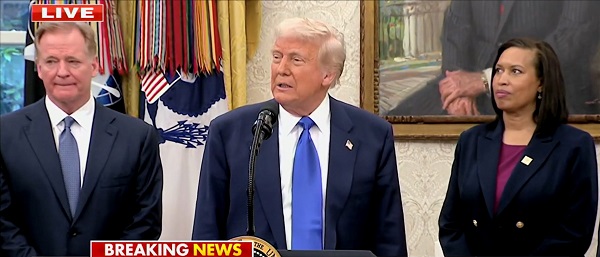Frontier Centre for Public Policy
The Great Canadian Hoax exposed
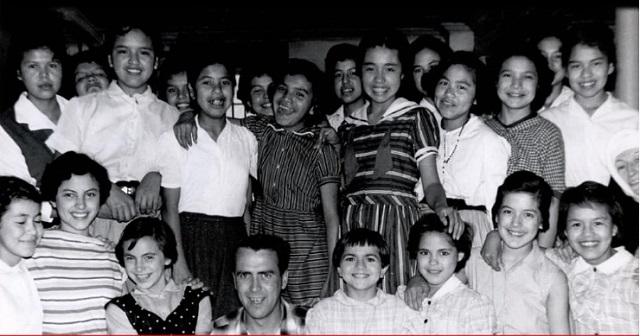
From the Frontier Centre for Public Policy
Grave Error: How The Media Misled Us (and the Truth about Residential Schools) edited by C.P. Champion and Tom Flanagan, Truth North and Dorchester Review, 343pp, $21.99) is a companion volume to Frontier’s From Truth Comes Reconciliation, which was published in 2021 (second edition is forthcoming). The two reviews published here are by Colin Alexander and Peter Best. The book demonstrates that there is no forensic evidence of Indian Residential School children that have been murdered and buried in residential school yards. There are a number of reasons for not believing the claim that children were murdered in these schools. Canadians are anxious to know the truth about the schools, and this book along with Frontier’s book go a long way to dispel the myths that have developed about the murder of residential school children. The book has been a top seller on Amazon since it was published in early January 2024.
This scholarly book of essays demolishes the narrative that any children went missing from Indian residential schools (IRS), let alone thousands, or that there are mass graves. Grave Error, in fact, debunks what essayist Jonathan Kay calls “a media-fuelled social panic over unmarked graves.” Mainstream media around the world—not just in Canada—ran with this press release issued on May 27, 2021:
This past weekend, with the help of a ground penetrating radar [GPR] specialist, the stark truth of the preliminary findings became known – the confirmation of the remains of 215 children who were students at the Kamloops Indian Residential School [KRS]. …
To our knowledge, these missing children are undocumented deaths,” stated Kukpi7 Rosanne Casimir. “Some were as young as three years old. …
Mainstream news media and politicians took the press release to heart, with Prime Minister Justin Trudeau lowering flags on federal buildings to half-mast for six long months. So debauched have the Enlightenment’s principles of inquiry become, along with those of responsible journalism, that it took outsiders to question the truth of this release.

Yes, Ground Penetrating Radar (GPR) found disturbed ground in the orchard near the school. That is because the land had buried drainage tiles from a septic system that had been installed in 1924. In any case, except for orphans and those whose upbringing was beyond their parents’ capacity, the IRS required a minimum age of six for admission.
No children were murdered and buried surreptitiously at night. Schools were paid on a headcount of children, so there was not a single name unaccounted for. There is a death certificate for every death, with burials either in the nearby cemetery or returned to their reserves. TB and other communicable diseases rampant everywhere caused most IRS deaths a century ago. Since the introduction of antibiotics, the death toll has been much lower. Many graves in recognized cemeteries are unmarked because the customarily used wooden crosses deteriorated over time. Despite that, in December 2021, Canadian Press called unmarked graves the story of the year!
Len Marchand’s autobiography, Breaking the Trail, provides an antidote for the horror stories at KRS. A former attendee during the time of the alleged murders and burials, he became Canada’s first Indigenous cabinet minister. The worst he says of his time there was that meals included mushy potatoes.
Essayist Ian Gentles says the juggernaut of misinformation began with the CBC program The Journal on October 30, 1990. Interviewed by Barbara Frum, Grand Chief of the Assembly of First Nations, Phil Fontaine, said he had been physically and sexually abused at his school. This led to a tsunami of former IRS attendees asserting similar allegations. Unfortunately, Ms. Frum did not ask who perpetrated the abuse, whether staff or fellow students. Or why he did not make a complaint to the police. I emailed Mr. Fontaine asking those questions but without receiving an answer.
Some essayists accept the proposition that there were real atrocities. I am not sure they were widespread. There were only a few successful prosecutions reported by the Truth and Reconciliation Commission. There are probably some abuses at boarding schools. Was it really an atrocity to cut an IRS attendee’s hair on arrival or to exchange a uniform for an orange shirt? Essayist and former staff member at Stringer Hall in Inuvik, Rodney Clifton, has described children on their return after the summer break with their families. They were often in poor physical condition, and some were still wearing the clothing, unwashed in the meantime, that they left the school with.
Essayist Tom Flanagan scores a bull’s-eye when quoting John Ioannidis, medical researcher at Stanford University: “The greater the financial and other interests and prejudices in a scientific field, the less likely the research findings are to be true.” With money almost unlimited for Indigenous issues, a multi-billion-dollar industry has grown out of pleading for money and telling Indigenous youth to feel sorry for themselves. By extension, the industry has prospered from laying guilt on schoolchildren and taxpayers. As shown in Lonely Death of an Ojibwa Boy by Robert MacBain, that includes what I construe to be a fraud, the Gord Downie and Chanie Wenjack charity.
I also disagree with essayists saying the Indigenous were dealt a bad hand, let alone that they need new treaties. What about the previously downtrodden Asian Canadians who have surpassed their white counterparts in incomes? Yes, Canada welcomed Indians into the armed forces for the Boer Wars and the two World Wars, only to treat them like dirt when the wars ended. But today there has been a role-reversal. Now Indigenous leaders can say whatever they want, and no one calls them out on saying outrageous things.
To me, the failure of Canada’s Indigenous policy derives from the excesses of the welfare state which, since the demise of the fur trade, destroyed self-reliance and work ethic—Indigenous cultures were destroyed, if you will. Now Canadians kowtow to demands for renewed tribalism and self-determination resembling South Africa’s apartheid. That would give leaders prestige and money for doing little. For followers, it connotes marginalization and second-class citizenship. No one is considering the needs of next generations living in violence-wracked settlements having no economic reason to exist, and in urban slums. It eludes notice that those who are educated and skilled and engaged in or preparing for rewarding employment seldom become addicts or commit suicide, and they seldom go to jail.
The billions paid out for the IRS and mass graves hoaxes are not delivering acceptable housing or any other help that works. I know an unemployed and all but unemployable Inuk who got a cheque for $95,000 in April 2023. By July he had blown it all and was again scrounging for cigarettes. Many billions add to GDP and salve a nation’s conscience. But enriching prostitutes and drug dealers does not address real needs.
That said, there are templates, notably in Asia, for raising Third World peoples into the First World in a single generation. I recommend Grave Error as a starting point for radically different thinking about what needs to be done to help Indigenous Canadians succeed in our country.
Colin Alexander was publisher of the Yellowknife News of the North for many years, and the advisor on education for Ontario’s Royal Commission on the Northern Environment. His latest book is Justice on Trial: Jordan Peterson’s case and others show we need to fix a broken legal system.
Frontier Centre for Public Policy
Canada’s New Border Bill Spies On You, Not The Bad Guys

From the Frontier Centre for Public Policy
By Lee Harding
Lee Harding warns that the federal government’s so-called border bill lets officials snoop on your data, ban big cash payments and even open your mail – all without a warrant
Think Bill C-2 is about stopping fentanyl? Think again. It lets the feds snoop your data, open your mail and ban big cash payments – no warrant needed
The federal government is using the pretext of border security, the fentanyl crisis and transnational crime to push through Bill C-2, legislation that dangerously expands surveillance powers, undermines Canadians’ privacy and restricts financial freedom. This so-called Strong Borders Act is less about protecting borders and more about policing citizens.
Bill C-2, a 130-page omnibus bill introduced on June 3, grants broad new powers to government agencies to spy on Canadians and share personal information with foreign countries. A more honest title might be the Snoop and Gossip Act.
Among its most intrusive provisions, the bill would make it illegal for any business, profession or charity to accept cash payments over $10,000, even if made in smaller, related transactions. Want to pay a contractor $10,001 in five separate payments for home renovations? Too bad.
The Justice Centre for Constitutional Freedoms quickly condemned the move. “Restricting the use of cash is a dangerous step toward tyranny and totalitarianism,” the organization posted to X. “Cash gives citizens privacy, autonomy, and freedom from surveillance by government and by banks.”
Under Bill C-2, internet service providers could be compelled—under threat of fines—to hand over names, locations and “pseudonyms” of users without a warrant. Any peace officer or public officer can demand this data by merely claiming “reasonable grounds to suspect” an offence “has been or will be committed.”
It doesn’t stop there. The bill would also authorize the government to open private mail under the same vague threshold of suspicion.
Experts in law and privacy say the bill is a massive overreach. University of Ottawa internet law scholar Michael Geist and Kate Robertson of the University of Toronto’s Citizen Lab both point out that successive federal governments have sought to expand internet surveillance for years, but Bill C-2 goes further than ever before.
“Bill C-2’s big brother tactics combine expansive warrantless disclosure with unprecedented secrecy,” Geist warns. He adds that the bill “overreaches by including measures on internet subscriber data that have nothing to do with border safety or security but raise privacy and civil liberties concerns.”
If the intent were truly to combat fentanyl trafficking and transnational crime, better tools already exist. Conservative MP Frank Caputo pointed out that the bill has 16 parts but says nothing about increasing penalties or jail time for fentanyl traffickers.
“There is nothing about bail in the bill,” Caputo said during early debate on the bill. “In this omnibus bill, it says that offenders can serve their sentence for trafficking in fentanyl from their couch.”
Bloc Québécois MP Claude DeBellefeuille argued that strengthening border security requires more boots on the ground. Two rural border crossings in her riding recently had their staffed hours cut in half.
“It is estimated that the CBSA (Canada Border Services Agency) already has a shortage of between 2,000 and 3,000 border services officers for current duties. If they are given new responsibilities, however necessary, there will be an even greater shortage,” she said.
Not only does Bill C-2 contradict Supreme Court precedent. It also sets the stage for Canada to share sensitive personal information with foreign governments. In 2014, the court ruled that Canadians have a “reasonable expectation of privacy in the subscriber information” provided to internet service providers and that police requests for such data amount to a “search” requiring a warrant.
Robertson warns that the bill not only defies this precedent but also enables Canada to share this dubiously acquired information with 49 other countries under the Second Additional Protocol to the Cybercrime Convention. Canada signed the agreement in 2023 but hasn’t ratified it. Bill C-2 would make that possible.
She calls the protocol’s weak human rights safeguards “a direct threat to existing protections under international human rights law.” Robertson co-authored a submission urging the Department of Justice to reject the 2AP and instead support data-sharing frameworks that are built on consistent rights protections across all signatories.
Further complicating matters, Canada is in negotiations with the United States over a data-sharing agreement under that country’s CLOUD Act. Canada’s willingness to comply may reflect lingering trade pressures from the Trump administration, pressures that could again push Canada to compromise its legal independence and citizens’ rights.
This bill should be scrapped or thoroughly revised. Canadians should not have to surrender their privacy and human rights to serve a global law enforcement agenda that disregards civil liberties. If the line between national security and authoritarianism is erased, the greatest threat to Canadians may no longer be drug traffickers—it may be their own government.
Lee Harding is a research fellow at the Frontier Centre for Public Policy.
Frontier Centre for Public Policy
New Book Warns The Decline In Marriage Comes At A High Cost
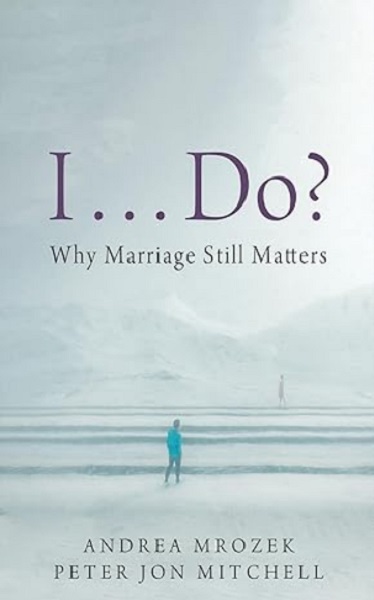
From the Frontier Centre for Public Policy
Travis Smith reviews I… Do? by Andrea Mrozek and Peter Jon Mitchell, showing that marriage is a public good, not just private choice, arguing culture, not politics, must lead any revival of this vital institution.
Andrea Mrozek and Peter Jon Mitchell, in I… Do?, write that the fading value of marriage is a threat to social stability
I… Do? by Andrea Mrozek and Peter Jon Mitchell manages to say something both obvious and radical: marriage matters. And not just for sentimental reasons. Marriage is a public good, the authors attest.
The book is a modestly sized but extensively researched work that compiles decades of social science data to make one central point: stable marriages improve individual and societal well-being. Married people are generally healthier, wealthier and more resilient. Children from married-parent homes do better across almost every major indicator: academic success, mental health, future earnings and reduced contact with the justice system.
The authors refer to this consistent pattern as the “marriage advantage.” It’s not simply about income. Even in low-income households, children raised by married parents tend to outperform their peers from single-parent families. Mrozek and Mitchell make the case that marriage functions as a stabilizing institution, producing better outcomes not just for couples and kids but for communities and, by extension, the country.
While the book compiles an impressive array of empirical findings, it is clear the authors know that data alone can’t fix what’s broken. There’s a quiet but important concession in these pages: if statistics alone could persuade people to value marriage, we would already be seeing a turnaround.
Marriage in Canada is in sharp decline. Fewer people are getting married, the average age of first marriage continues to climb, and fertility rates are hitting historic lows. The cultural narrative has shifted. Marriage is seen less as a cornerstone of adult life and more as a personal lifestyle choice, often put off indefinitely while people wait to feel ready, build their careers or find emotional stability.
The real value of I… Do? lies in its recognition that the solutions are not primarily political. Policy changes might help stop making things worse, but politicians are not going to rescue marriage. In fact, asking them to may be counterproductive. Looking to politicians to save marriage would involve misunderstanding both marriage and politics. Mrozek and Mitchell suggest the best the state can do is remove disincentives, such as tax policies and benefit structures that inadvertently penalize marriage, and otherwise get out of the way.
The liberal tradition once understood that family should be considered prior to politics for good reason. Love is higher than justice, and the relationships based in it should be kept safely outside the grasp of bureaucrats, ideologues, and power-seekers. The more marriage has been politicized over recent decades, the more it has been reshaped in ways that promote dependency on the impersonal and depersonalizing benefactions of the state.
The book takes a brief detour into the politics of same-sex marriage. Mrozek laments that the topic has become politically untouchable. I would argue that revisiting that battle is neither advisable nor desirable. By now, most Canadians likely know same-sex couples whose marriages demonstrate the same qualities and advantages the authors otherwise praise.
Where I… Do? really shines is in its final section. After pages of statistics, the authors turn to something far more powerful: culture. They explore how civil society—including faith communities, neighbourhoods, voluntary associations and the arts can help revive a vision of marriage that is compelling, accessible and rooted in human experience. They point to storytelling, mentorship and personal witness as ways to rebuild a marriage culture from the ground up.
It’s here that the book moves from description to inspiration. Mrozek and Mitchell acknowledge the limits of top-down efforts and instead offer the beginnings of a grassroots roadmap. Their suggestions are tentative but important: showcase healthy marriages, celebrate commitment and encourage institutions to support rather than undermine families.
This is not a utopian manifesto. It’s a realistic, often sobering look at how far marriage has fallen off the public radar and what it might take to put it back. In a political climate where even mentioning marriage as a public good can raise eyebrows, I… Do? attempts to reframe the conversation.
To be clear, this is not a book for policy wonks or ideologues. It’s for parents, educators, community leaders and anyone concerned about social cohesion. It’s for Gen Xers wondering if their children will ever give them grandchildren. It’s for Gen Zers wondering if marriage is still worth it. And it’s for those in between, hoping to build something lasting in a culture that too often encourages the opposite.
If your experiences already tell you that strong, healthy marriages are among the greatest of human goods, I… Do? will affirm what you know. If you’re skeptical, it won’t convert you overnight, but it might spark a much-needed conversation.
Travis D. Smith is an associate professor of political science at Concordia University in Montreal. This book review was submitted by the Frontier Centre for Public Policy.
-

 Uncategorized14 hours ago
Uncategorized14 hours agoCNN’s Shock Climate Polling Data Reinforces Trump’s Energy Agenda
-
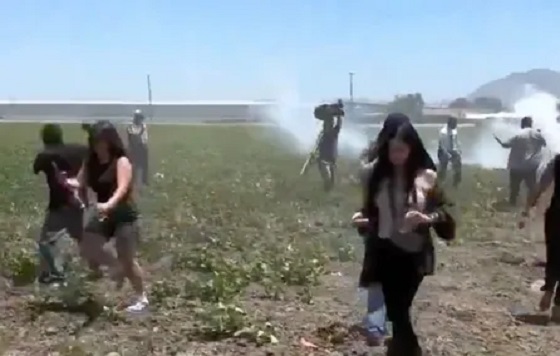
 illegal immigration2 days ago
illegal immigration2 days agoICE raids California pot farm, uncovers illegal aliens and child labor
-

 Opinion7 hours ago
Opinion7 hours agoPreston Manning: Three Wise Men from the East, Again
-

 Addictions6 hours ago
Addictions6 hours agoWhy B.C.’s new witnessed dosing guidelines are built to fail
-

 Business4 hours ago
Business4 hours agoCarney Liberals quietly award Pfizer, Moderna nearly $400 million for new COVID shot contracts
-

 Business1 day ago
Business1 day agoTrump to impose 30% tariff on EU, Mexico
-

 Energy1 day ago
Energy1 day agoLNG Export Marks Beginning Of Canadian Energy Independence
-
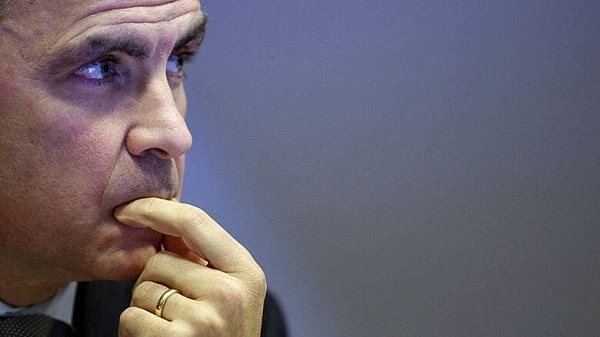
 Business1 day ago
Business1 day agoCarney government should apply lessons from 1990s in spending review





